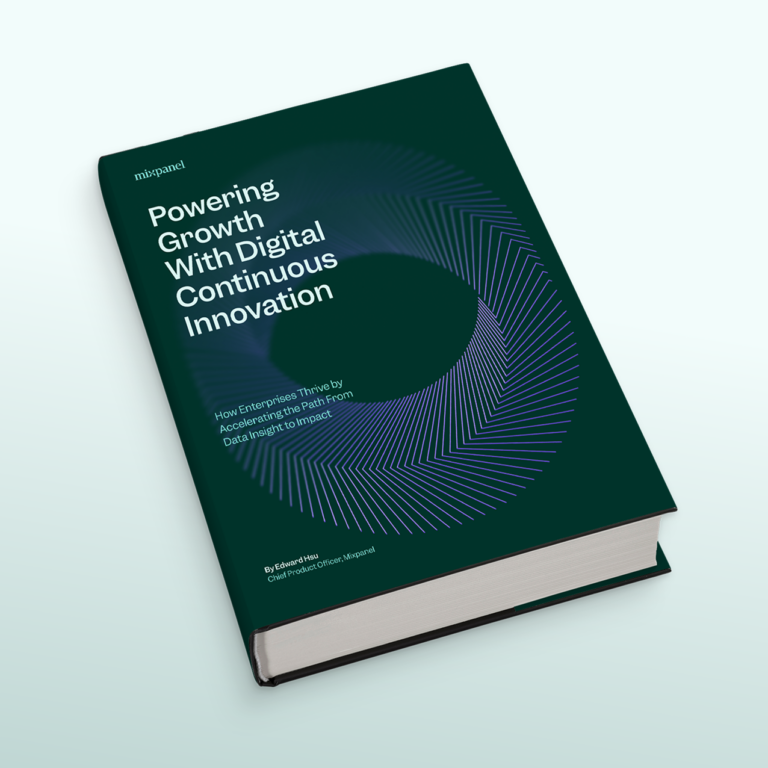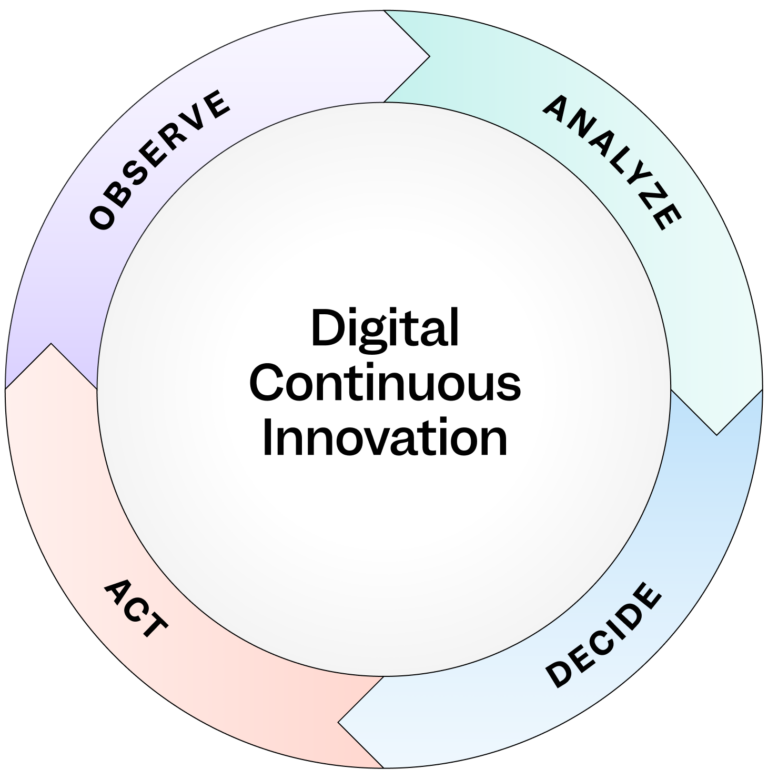
The C-suite imperative: How digital continuous innovation drives sustainable enterprise growth

How much of your product development budget is spent on features that don’t truly move the needle?
It's a critical question for any leader, because today, every business—from B2B services to traditionally brick-and-mortar retailers—competes with its digital products. The pace of this competition is relentless, but simply shipping features faster isn't the answer. The biggest challenge is ensuring every development cycle measurably improves user engagement, satisfaction, and ultimately, business performance.
Without a reliable system to connect team efforts to these outcomes, that massive investment in talent can feel like a gamble.
To meet this challenge, leading organizations are adopting Digital Continuous Innovation (DCI)—an ongoing cycle of discovery, alignment, and improvement designed to ensure you’re always building what truly matters.
What is Digital Continuous Innovation (DCI)?
Most enterprises have invested heavily to solve the first part of the digital equation—speed. Thanks to DevOps, it’s transformed how we ship, but it doesn't solve what we’re building or why it matters. This is the gap digital continuous innovation (DCI) fills—ensuring that teams focus not just on execution, but on building the right things in the first place.
Think of it this way:
- Business intelligence gives you the scorecard—a look at overall business performance.
- Data science teams make big bets—exploring long-term strategic questions that can take months.
- Digital Continuous Innovation (DCI) is different because it’s built for action now. It empowers product and marketing leaders—the people closest to the customer experience—to run a tight, continuous loop of improvement. It gives them the ability to uncover a user insight, launch a targeted change, and measure the results, often in a matter of days or weeks, not quarters.
Essentially, digital continuous innovation is the operating system for user-driven growth, answering not just "how fast can we build?" but more importantly, "are we building the right thing?" (Download the ebook here for the complete DCI framework.)

The strategic advantages of DCI
For an enterprise executive, adopting a DCI framework delivers clear, compounding benefits that create a powerful competitive edge.
1. Gain a data-driven competitive advantage
DCI enables organizations to move beyond gut feelings and make strategic decisions based on real-time user behavior. It draws a straight line between a specific user behavior you can see and a business outcome you can measure, allowing you to accelerate from insight to impact. That means teams can move beyond debating opinions and start answering critical questions with real data: “Which of these new designs will actually increase conversions?” or “Where exactly are users dropping off in the sign-up flow?” This allows them to pinpoint the exact changes that drive the most value, building a competitive advantage based not on luck, but on a repeatable system for growth.
2. Enhance agility and faster time-to-market
The longer it takes to test an idea, the greater the chance that a competitor ships faster or that you’ll invest significant resources in the wrong solution. DCI is designed to radically shorten this timeline. Instead of waiting months for a large project to conclude, teams can get actionable insights and ship improvements in days or weeks. This is the ability to quickly validate a hypothesis, test a new user flow, or confirm a feature's value before committing to a full-scale rollout. This capacity for rapid learning means enterprises consistently get value into the hands of their customers faster and adapt to market shifts with much greater confidence.
3. Improve customer experience and loyalty
Continuous optimization leads to more intuitive and engaging digital experiences. As highlighted in our new ebook, the global messaging platform Rakuten Viber used DCI principles to analyze user interaction patterns within their app. This led to a key insight that the path to creating a group chat was not intuitive, and after A/B testing a redesign, resulted in a 10% growth in group chat creation, fostering stronger user connections and loyalty. This is the direct result of listening to user behavior through data.
4. Increase operational efficiency and reduce waste
Many organizations suffer from disconnected tools and "broken handoffs" that slow progress and waste resources. Digital continuous innovation fixes this by creating a more streamlined path from observation to action. By giving teams access to self-serve tools to investigate their own answers, it eliminates the bottlenecks that stall progress. The result is that your engineering efforts become hyper-focused on validated, high-impact opportunities but also fewer debates on building products you know will make an impact.
5. Foster better alignment and collaboration
When product, marketing, and development teams work from different data sets, misalignment and friction are inevitable. When marketing’s definition of an 'active user' differs from the one product uses, there’s no data problem—it’s a trust and alignment problem.
DCI addresses this by establishing a common understanding of key business metrics and goals. It ensures everyone, from marketing and product to the executive team, is looking at the same numbers, defined in the same way. Now in agreement, teams can shift their energy on what to do with the data leading to faster decisions, better collaboration, and a unified effort to drive business results.
6. Build a strong foundation for future innovation
Perhaps most importantly, a mature DCI practice is the perfect foundation for AI-powered automation. The rich, structured data on user behavior, feature performance, and optimization outcomes is the ideal fuel for training AI models. By building the integrated tools and workflows for DCI today, you’re positioning your organization to create AI-driven digital experiences tomorrow.
Putting DCI into practice
Executing DCI involves a simple but powerful loop: Observe, Analyze, Decide, and Act (OADA). The power of DCI is not just in these steps, but in making them transparent, rapid, and repeatable.

Teams continuously Observe user behavior through both data and direct feedback, Analyze that information to uncover a key insight, Decide on the highest-impact action, and then Act to implement the change. The outcome of one 'Act' immediately becomes the data for the next 'Observe,' creating a tight, transparent loop of learning that turns small enhancements into significant, compounding business results.
Your roadmap to continuous growth
To remain competitive, enterprises must evolve from simply having a digital presence to mastering the art of continuously improving it. Digital continuous innovation provides the framework to build this capability, turning data into a growth engine.
Access the ebook today where you'll find:
- A deep dive into the three common data-to-value chains (and respective challenges)
- How to create the conditions for success
- Detailed steps for assessing your organization
- DCI success stories from LG CNS, Taskrabbit, and Employment Hero
- A guide to leveraging technology to build a powerful DCI engine
Download it to learn more and how your organization can create a culture of continuous innovation.


